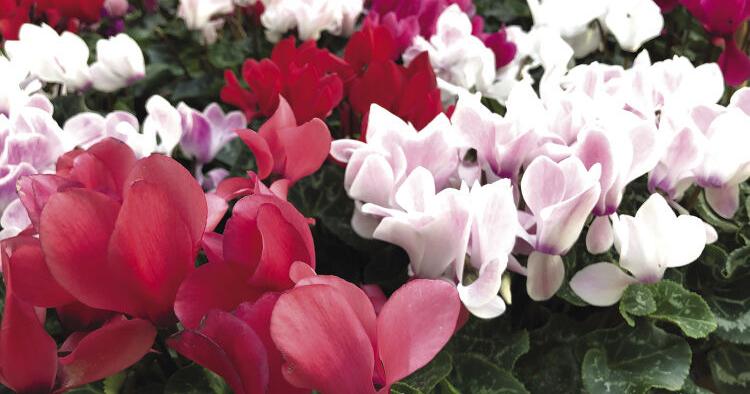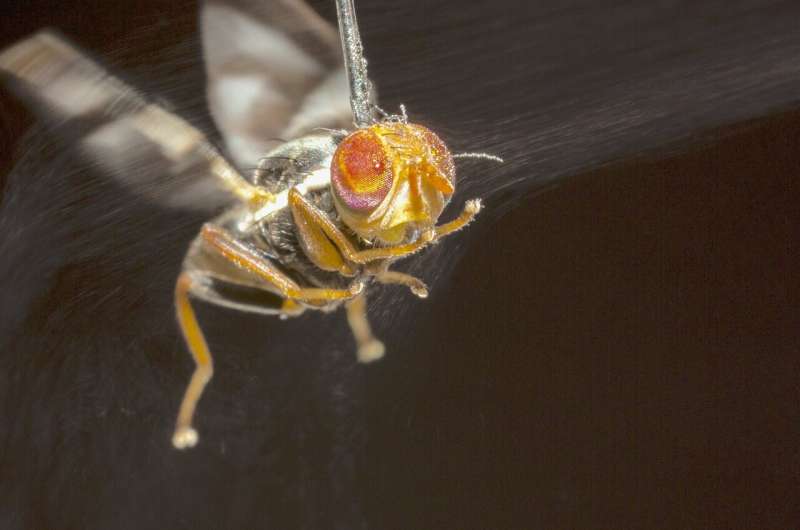An entomologist examines a hemlock branch infested with woolly adelgid. The invasive insect plunges its needle-like maw deep into the branches of hemlock trees, slowly sucking out the nutrients and killing the plant. John Bazemore/Associated Press
Over the past year I’ve written about several invasive species, a few diseases, and whether you should take down your bird feeders to stop the spread of disease. I was surprised to find I had never covered Hemlock Woolly Adelgid and was asked about it again recently. So this week let’s make sure we know what they are and what you can or can’t do to control this invasive insect.
First, while Hemlock Woolly Adelgid (HWA) is a new topic in my column, this destructive insect has been in Maine since 1999, when it was accidentally shipped here from Connecticut with an untreated crop. HWA made its first hop (by human transport) from its home territory of East Asia to the United States in 1951 near Richmond, Virginia. HWA are a “true beetle” in the order Hemiptera, or “half-winged” beetles, such as aphids, leaf hoppers, or bed bugs. You may be familiar with this order’s common trait, their “stinging-sucking” mouthparts – think aphids biting plants in your garden, or (hopefully not) bed bugs biting you.
That’s the problem with HWA: Adults use their stiletto — the fancy name for their straw-like mouthparts — three times the length of their body, to pierce the tissue of a hemlock and extract the nutrients. The small, 0.8mm adults are difficult to find, but the egg sacs they leave on the underside of hemlock branches are much easier to spot. These patches, often with hundreds of eggs, look like white cottony tufts along branches.
In the spring, the larvae hatch from these eggs and then attempt to spread to new trees. And here is our question for this week. Some readers wonder if putting up birdhouses will increase the spread of HWA. The speed at which HWA spreads and the amount of damage they leave behind is a cause for concern given how important hemlocks are to a healthy forest. The tiny HWA larvae are known to spread by blowing in the wind, moving on mammalian fur, and even being carried long distances by riding on bird feathers. A paper published in January 2019 by researchers from the University of Connecticut and the US Forest Service showed that the nymphal stage of HWA — called “crawlers” — is most commonly (passively) ingested by birds during their spring northward migration that they are capable of to settle into new hemlocks.
This study showed how a small, relatively immobile insect could travel across the US and expand its range so quickly, beyond the unfortunate human-caused spread. It is important to recognize the reason for the spread here to make it clear that bird feeders play no role in the spread of FWA. The seeds you put in your feeders will attract birds, but only to your feeders so you can see them more easily. The hopefully healthy hemlock forest would be home to so many native insects that it would have a greater attraction for the birds.
I would like to take this opportunity to remind you that it is important to keep your bird feeders clean to prevent the spread of diseases, particularly conjunctivitis in birds. Use a diluted bleach solution (or vinegar) and let it dry completely before removing it. When it comes to HWA management, I recommend visiting the Maine Forest Service’s HWA website, which has several control methods and a form for reporting areas where you find HWA in Maine.
WINTER BIRD BOX
Roost or Nest? What is the difference? It is becoming increasingly popular to put up nesting boxes in winter to provide shelter for birds. I would like to thank Maggie from Topsham for writing me questions about roosting places and making sure there will be nesting places for her wrens next spring. Let’s explain exactly what they do, how and why they help birds in winter and how they differ from the bird feeders we offer in summer.
Whether it’s roosting or nesting boxes, the premise is the same: we add additional shelters to the environment for birds to increase their chances of survival or successful nesting sites. The lack of stumps or old dead trees in the landscape means many species that use cavities don’t have enough of these shelters, so we help with these artificial offerings.
A few key differences between sleeping and nesting boxes are their size and construction. When it comes to size, nest boxes are generally smaller and only need to hold the nest that a bird will build, and that nest only needs to be big enough to hold its eggs. The chicks from this nest often fledge before they are fully grown. Roosts, on the other hand, need to be larger, as you’ll often have several adult (or at least full-grown) birds all sleeping together: more bodies mean more warmth. Most built sleeping boxes also have perches inside for these birds to perch on while the nest boxes are otherwise empty (leaving room to build a nest). The entry hole or cavity for entering the box is often at the top of a nest box, allowing the birds to fall into the nest, while sleeping box manufacturers often make the holes at the bottom to seal in the warm air inside.
Both sleeping and nesting boxes make for interesting backyard observations and make great gifts. Whether you buy them ready made or build them yourself, keep that in mind as we head into the holiday gift season. They are sure to put a smile on the recipient’s and the birds’ faces.
Do you have a nature question for Doug? email questions [email protected] and visit maineaudubon.org to learn more about birding, native plants, and programs and events focused on Maine’s wildlife and habitat. Doug and other naturalists are conducting free bird walks Thursday mornings from 8am to 10am at Gilsland Farm Audubon Sanctuary in Falmouth.
Invalid username / password.
Please check your email to confirm and complete your registration.
Use the form below to reset your password. If you have submitted your account email, we will send you an email with a reset code.
” previous
Mark Fanning, 76, is remembered as “the godfather” of Maine falconry
Next ”
What’s up in December: Mars hits highest opposition in 2 decades
similar posts









